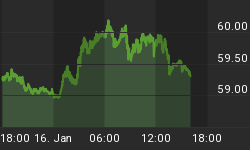Since their inception nearly three decades ago, exchange-traded funds, aka ETFs, have become an integral part of the average investor’s portfolio thanks to some key qualities that include diversification, easy trading, and in most cases, costs that come in lower than mutual funds.
Now, they’re evolving even further.
Some money managers have started offering ETFs as tools for specialization rather than instruments designed for diversification by carving up the stock market into ever thinner slices for investors eager to find the next big thing.
As such, ETFs have evolved from broad indexes such as the SPDR S&P 500 ETF (NYSEARCA:SPY) to sector-specific ETFs covering energy, technology, and healthcare and even into niches-within-niches in leading-edge industries such as cybersecurity, robotics, and video gaming.
While thematic funds are not recommended for all retail investors, interest in niche ETFs in the energy sector has been growing as investors search for opportunities outside mainstream investing.
Here are five energy ETFs that offer a slightly different slant to energy investing than more popular ETFs such as the Energy Select Sector SPDR ETF (NYSEARCA:XLE).
#1 Pacer American Energy Independence ETF (USAI)
AUM: $11.4M
Expense Ratio: 0.75%
12-Month Returns: -3.77%
If you want to bet big on the notion that the United States is on the cusp of becoming an energy independent nation, a status it could achieve in the current year, then this one is for you.
The Pacer American Energy Independence ETF (NYSEARCA:USAI) is a strategy-driven ETF that offers investors exposure to U.S. and Canadian oil and gas companies that generate the majority of their cash flows from midstream energy infrastructure activities.
The USAI ETF provides investors with an opportunity in energy independence without incurring all of the risks involved in upstream or downstream investing. Related: Five Things To Watch In The Battery Metals Market
USAI invests in 33 energy equities, with 80% of its funds in US and Canadian midstream companies and 20% in US MLPs and general partners of MLPs. The portfolio rebalances quarterly.
#2 Gas Exploration Bull 3X Shares (GUSH)
AUM: $140.5M
Expense Ratio: 1.17%
12-Month Returns: -82.35%
Gas prices have been flirting with multi-year lows, and it comes as no surprise that ETFs tracking the commodity are getting hammered. More so for leveraged ETFs such as Gas Exploration Bull 3X Shares (NYSEARCA:GUSH), which seeks to provide daily investment results of 300% of the performance of the S&P Oil & Gas Exploration & Production Select Industry Index.
This fund creates short positions by investing at least 80% of its assets in options on securities and indices as well as swap agreements and forward contracts.
The jury is still out regarding when a natural gas rebound could arrive with prices currently hovering around sub-$2/MMBtu levels. However, GUSH could magnify results if and when energy prices stage a nice recovery, with timing being key here.
#3 Direxion Daily Natural Gas Related Bear 3X Shares (GASX)
AUM: $23.4M
Expense Ratio: 1.09%
12-Month Returns: 129.80%
Bear, inverse, and clean energy ETFs seem to be the only energy ETFs getting some joy in this market, and GASX is no exception.
For investors who prefer to go with the flow, Direxion Daily Natural Gas Related Bear 3X Shares (NYSEARCA:GASX) could be a great investment. GASX seeks to provide daily investment results, net of expenses, of 300% of the inverse of the daily performance of the ISE-Revere Natural Gas Index.
GASX is designed to take advantage of both event-driven news as well as long-term trends in the natural gas industry.
With a juicy nearly 130% return over the past 12 months, natural gas bears have been killing it with this ETF. By the same token, they could find themselves in trouble if gas prices suddenly reverse course.
#4 Van Eck Vectors Low Carbon Energy ETF (SMOG)
AUM: $107.0M
Expense Ratio: 0.63%
12-Month Returns: 30.17%
Van Eck Vectors Low Carbon Energy ETF (NYSEARCA:SMOG) is a clean energy fund that seeks to replicate, before fees and expenses, the yield performance of the Ardour Global IndexSM (Extra Liquid). This fund invests at least 80% of its assets in low carbon energy companies, including small- and medium-cap companies and foreign issuers. Low carbon companies refer to energy companies primarily engaged in alternative energy, including alternative fuels, renewable energy, and related enabling technologies such as advanced batteries. Related: The Modern History Of Financial Entropy
With the ESG drive in full swing, it’s quite likely that clean energy funds such as SMOG will continue seeing a healthy flow of funds for years to come.
#5 First Trust NASDAQ Clean Edge Smart Grid Infrastructure Index Fund (GRID)
AUM: $32.6M
Expense Ratio: 0.70%
12-Month Returns: 25.39%
Energy-conserving technologies such as smart grids--the digital technology that enables two-way communication between customers and the service--are all the rage right now as the world continues to grapple with the realities of climate change.
The smart-grid market is projected to grow at 15.6% CAGR to hit $70 billion by 2027, providing ample growth runways for energy investors.
First Trust NASDAQ Clean Edge Smart Grid Infrastructure Index Fund (NASDAQ:GRID) is a smart-grid fund that seeks to track the performance of the NASDAQ OMX Clean Edge Smart Grid Infrastructure Index, an index made up of common stocks in the grid and electric energy infrastructure sector.
GRID invests at least 90% of its net assets in stocks involved in electric grids, networks, electric meters and devices, energy storage and management, and companies that make the software used by the smart-grid infrastructure sector.
The bottom line? A newer lineup of ETFs makes investing in energy far more specialized than it ever was before. If you’re a specific bull or a specific bear, you can find your niche on this list, whether it’s toeing the line or highly contrarian. It’s not just about betting on oil and gas or not anymore--it’s about more narrowly guessing energy’s next move.
By Anes Alic for Oilprice.com
More Top Reads From Safehaven.com:

















